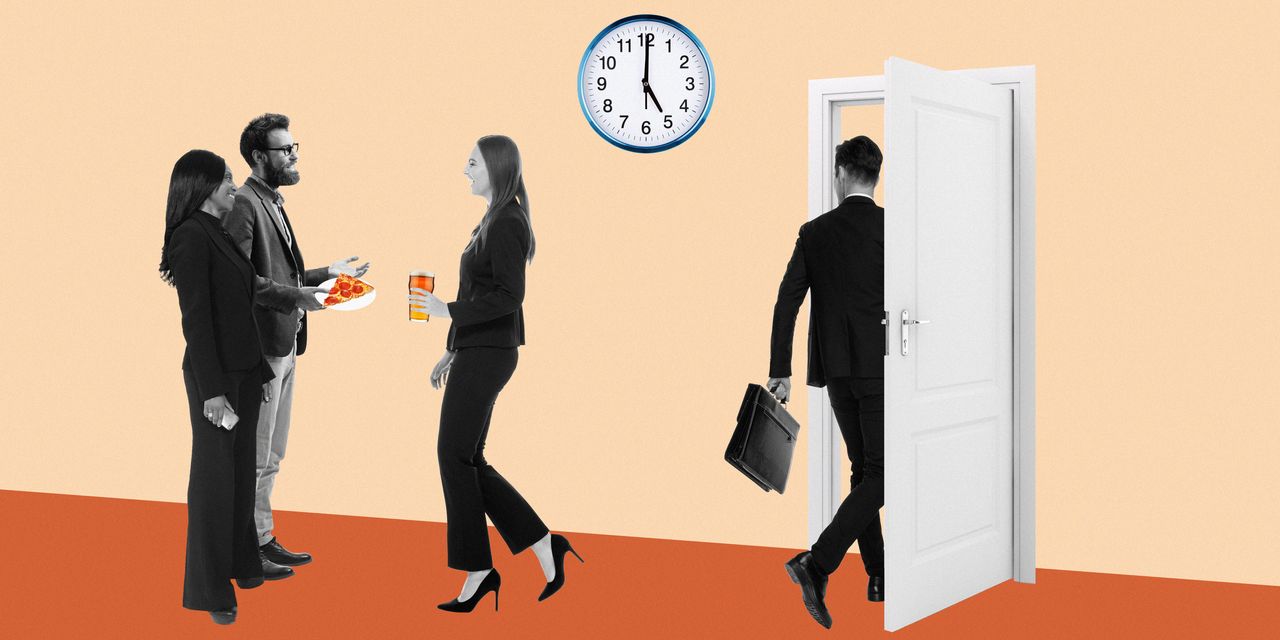- cross-posted to:
- work@group.lt
- hackernews@derp.foo
- cross-posted to:
- work@group.lt
- hackernews@derp.foo
Office happy hours, client dinners and other after-hours work gatherings lose their luster as more people feel the pull of home
Patience for after-hours work socializing is wearing thin.
After an initial burst of postpandemic happy hours, rubber chicken dinners and mandatory office merriment, many employees are adopting a stricter 5:01-and-I’m-done attitude to their work schedules. More U.S. workers say they’re trying to draw thicker lines between work and the rest of life, and that often means clocking out and eschewing invites to socialize with co-workers. Corporate event planners say they’re already facing pushback for fall activities and any work-related functions that take place on weekends.



Real wages are actually up.
The company I work for was nice enough to give me a 5% COL increase last year. Groceries are 50% higher. Gas 25%. Insurance 20%. Clothing is definitely at least 10%. Restaurants about 20%.
But yeah… My “real” wage is higher.
I’m guessing you also believe in Keynesian economics.
Wait what’s wrong with keynesian economics?
Nothing in particular, it’s better than classical economics and is an actual thing unlike MMT. It’s certainly not perfect, but I don’t know that a perfect school of economic thought is even possible.
No they’re not. Wages have not kept up with inflation over the last few years.
Wages have not kept up with inflation over the last few
yearsdecades.What’s a real wage?
More than what I get.
A measurement of nominal wages against a series of basket of goods indices that control for real-world value of earnings — accounting for inflation and a number of other market and environmental factors.
How does that work? Unless there’s been some drastic improvements very recently, or billionaires are included, US wages have been losing purchasing power for decades.
When I last checked a few years ago, when accounting for inflation, average US wages had dropped about 5% compared to the 70s while the price of goods had increased by anywhere from 50-100% in most cases, with some things increasing by 200% or more. College, in particular, is up like 1,100% or something from the beginning of the 70s. Another absurd example is a taco at Taco Bell, which has doubled in price since the 90s, when accounting for inflation. The cost of rent has doubled since the 70s and has gotten even worse in recent years. The rule used to be not to spend more than 30% of your wages on rent. Now it’s don’t spend more than 60%. It used to be feasible to buy a house on the wages of 1 person. Now, it’s barely viable to afford a house on the wages of 2 people.
Wealth inequality is the worst it’s been in US history. According to the IRS, more than half of Americans made less than $20k last year - I think 51% made less than $15k. At a previous job where I made roughly $25k a year, I was making more than the bottom 60% of Americans. Raises haven’t kept up with CoL increases for years now. The average American works 50 hours a week between 2 jobs and switches jobs every 2 years because it’s the best way to make sure you’re paid what your skills are actually worth.
I can’t imagine where the data you saw came from, but that has the same vibes as when they said that people were going to take their COVID checks and use them to buy cars.